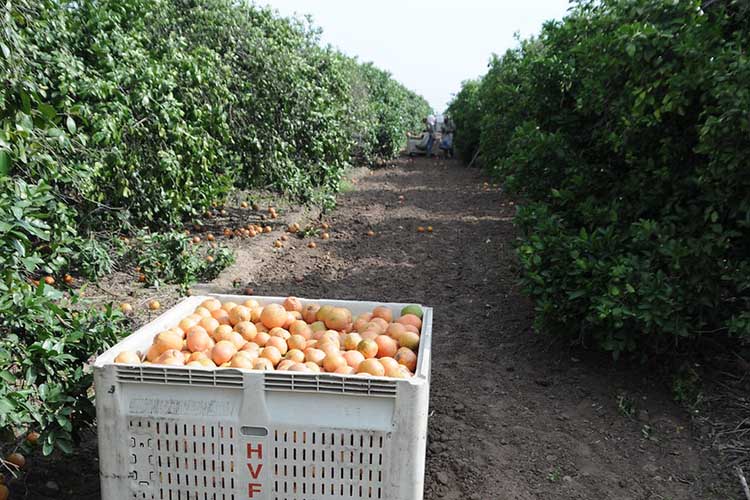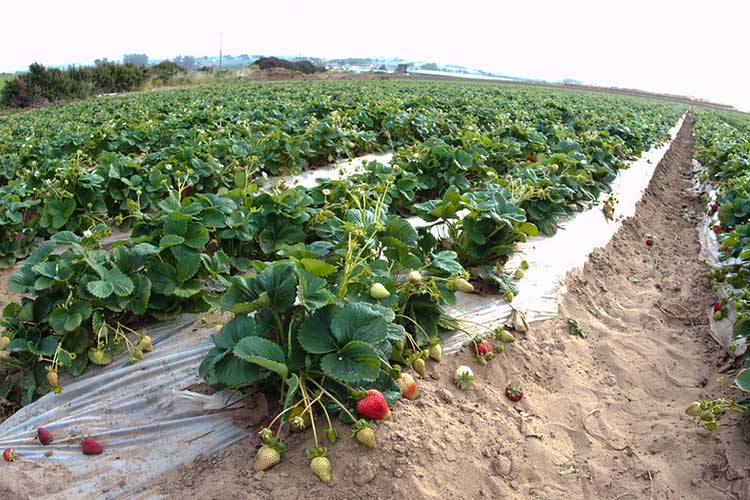Whether you grow almonds or apples, peppers or prunes, crop insurance options are available to you. USDA’s Risk Management Agency (RMA) administers Federal crop insurance that protects 76 specialty crops, and we’re continuing to improve and expand insurance options for specialty crop producers.
New in 2021
First, for young citrus trees, the biggest threats are freeze, fire and lack of irrigation because of drought. A new insurance option – California Citrus Trees – helps California citrus producers manage this risk, especially as they deal with some unusual weather patterns over the past decade. The policy covers orange trees, grapefruit trees, mandarin/tangerine trees, lemon trees and tangelo trees. To date, 196 policies were purchased, covering more than $50 million in liabilities.

Second, Florida strawberry producers can use the new Production and Revenue History (PRH) plan that targets specialty crops affected by a lack of viable public price information. The plan’s key feature is that the coverage is based on the producer’s personal yield and revenue history, which is a much more accurate and tailored insurance guarantee for the producer. We developed PRH specifically for specialty and organic producers, to provide revenue coverage similar to other non-organic field crops.
Third, we’ve made some major changes to Whole-Farm Revenue Protection (WFRP), the policy that is available for all crops in all counties and is tailored for any farm with up to $8.5 million in insured revenue. The changes are especially good for specialty crop producers. Specifically, direct market producers who can now report two or more commodities using a new combined direct marketing code. Talk about a time saver.
Also for WFRP, we made changes for organic producers, allowing them to report acreage as certified organic, or as acreage in transition to organic, when the producer has requested an organic certification by the acreage reporting date. This allows organic producers more flexibility when reporting certified acreage.
Coming in 2022
First, that PRH policy that was available for Florida strawberries. It’ll now be available for California strawberries in crop year 2022.
Also, next year, Florida producers will be able to insure several citrus commodities under an Actual Production History plan that offers several advantages over the existing Florida Citrus Fruit Dollar Plan. This product provides individualized coverage based on historical yield instead of a state’s average value. It also provides more comprehensive coverage for citrus fruit during the bloom phase until fruit forms on the tree and a simpler loss adjustment process and faster settlement of claims.

In Development
We are constantly reviewing current crop insurance options as well as gathering feedback from producers to develop new policies as well as improve existing ones. In 2023, we are rolling out a policy specifically for guar.
As we improve and expand our offerings, more specialty crop producers are getting coverage. Over the past 30 years, liabilities (or the value of crops insured) for specialty crops rose from $1 billion to more than $20 billion. Similarly, over the past 10 years, liabilities for organic crops rose from $207 million to more than $1.7 billion, and the number of policies has more than doubled.
Manage Risk on Your Operation
2021 has shown us the importance of getting crop insurance, from drought to wildfire, and from hurricanes to winter storms. And we want you to know, crop insurance is for all producers and all crop types.
RMA has specialty crop liaisons available to assist specialty crop producers, whether you’re new to crop insurance or if you have feedback on how we can make crop insurance better meet the needs of specialty crop producers.
While we have policies for specific specialty crops, if your crop isn’t listed, we highly recommend that you consider WFRP. Additionally, for crops without available coverage, the Noninsured Crop Disaster Assistance Program provides coverage options to help you manage risk on your farm.
Get Coverage
Crop insurance is sold and delivered solely through private crop insurance agents. A list of crop insurance agents is available at all USDA Service Centers and online at the RMA Agent Locator. Also, you can learn more by reading our August 26, 2021 news release or visiting the RMA Specialty Crops webpage.
Richard Flournoy is the acting administrator of USDA’s Risk Management Agency.


